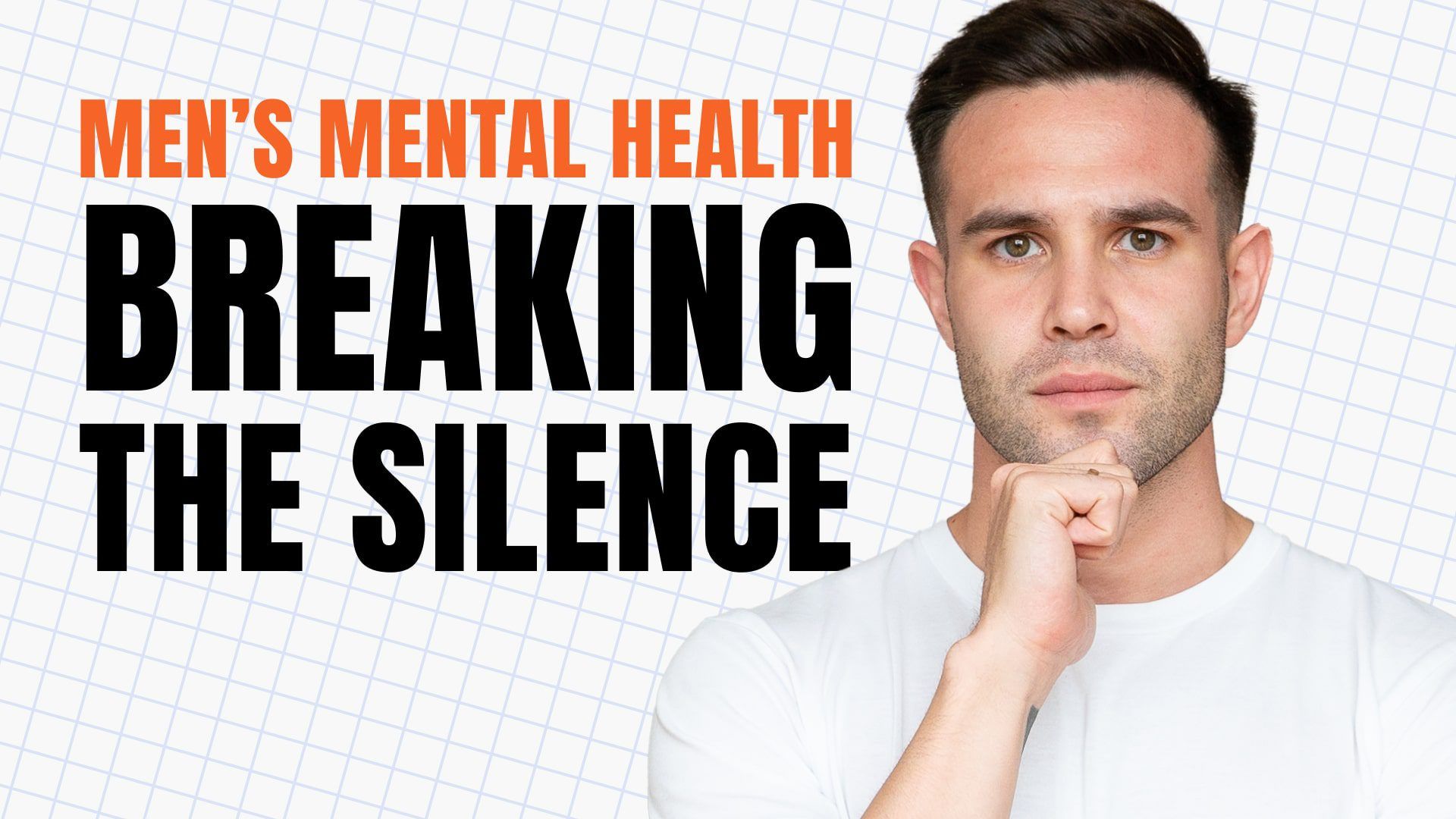How to Be Healthy on a Budget: A Comprehensive Guide

Table of contents
In this article, you will learn…
Maintaining a healthy lifestyle doesn’t have to be expensive. In this article, I’ll guide you through practical, evidence-based strategies to stay healthy without breaking the bank.
Whether you’re focusing on nutrition, fitness, or mental well-being, I’ll show you how to make smart, affordable choices.
You’ll learn how to shop smarter, eat better, and stay active—all while keeping your budget in check.
Don’t like to read? Watch the video
Key takeaways:
- Nutrition on a budget is achievable: You can eat healthy by focusing on affordable foods like beans, eggs, and seasonal produce while avoiding expensive processed foods.
- Smart shopping saves money: Buy in bulk, choose seasonal and local produce, and consider frozen options to keep your grocery bills low without compromising on nutrition.
- Fitness doesn’t need to be expensive: Stay active with home workouts, outdoor activities like running, and affordable gym alternatives.
- Mental health can be maintained affordably: Use cost-effective strategies like mindfulness, meditation, and access to free or low-cost mental health resources to support your well-being.
- Planning is key: Meal planning, batch cooking, and smart grocery shopping can help you maximize your budget while ensuring you eat well and stay healthy.
- Supplements should be used wisely: Only consider supplements when necessary, and choose cost-effective options to support your health without unnecessary expenses.
Nutrition on a Budget
Eating healthy doesn’t have to come with a hefty price tag. In fact, with the right strategies, you can nourish your body with all the essential nutrients without overspending. Let’s dive into how you can make this happen.
Affordable Nutrition Strategies
First, it’s crucial to understand that healthy eating is all about choosing nutrient-dense foods that give you the most bang for your buck.
Affordable Protein Sources
Protein is vital for muscle repair, immune function, and overall health, but it doesn’t have to be expensive. Eggs are one of the most affordable sources of high-quality protein. They are versatile enough to be used in countless dishes, making them a staple for anyone looking to eat well on a budget.
Another budget-friendly protein source is beans and lentils. These plant-based powerhouses are not only cheap but also packed with fiber, which helps keep you feeling full longer.
Whether you add them to soups, salads, or use them as a meat substitute in your favorite dishes, beans and lentils are a fantastic way to stay healthy without breaking the bank.
If you prefer some variety, canned fish like sardines or tuna are also excellent choices. They’re rich in omega-3 fatty acids, which are crucial for heart and brain health, and they often cost significantly less than fresh fish.
Inexpensive Carbohydrates
Carbohydrates are another essential part of a balanced diet, and they don’t have to be expensive either. Staples like rice, oats, and potatoes are incredibly affordable and versatile.
They provide the energy your body needs to function throughout the day and can be used in a wide variety of meals, from hearty breakfasts to satisfying dinners.
Healthy Fats and Micronutrients on a Budget
When it comes to fats and micronutrients, you can also make smart choices that won’t strain your wallet.
Olive oil, for example, is a healthy fat that’s great for cooking or adding to salads. And while nuts can be pricey, buying in bulk and focusing on more affordable options like peanuts or walnuts can ensure you get those essential healthy fats without overspending.
Don’t forget about your vegetables and fruits. While fresh produce can sometimes be costly, especially out of season, there are ways to work around this.
Choosing seasonal vegetables and fruits not only ensures you’re getting the freshest options but also the most affordable. When fresh isn’t feasible, frozen vegetables and fruits are just as nutritious.
They’re picked at their peak ripeness and frozen to retain their nutritional value, and they often come at a fraction of the price of fresh produce.
Smart Shopping Tips
How you shop can significantly impact your food budget. Here are some strategies to help you save money while still eating well:
Buy in Bulk
Purchasing items like grains, beans, and nuts in bulk can save you money in the long run. Stores like Costco or local co-ops often offer these options at reduced prices, allowing you to stock up on essentials without overspending.
Choose Seasonal and Local Produce
Seasonal fruits and vegetables are typically cheaper because they are more abundant. Local farmers’ markets can offer great deals, especially towards the end of the day when sellers are eager to move their remaining stock.
Opt for Frozen When Necessary
While fresh produce is ideal, it’s not always the most budget-friendly option, especially out of season. Frozen fruits and vegetables, as mentioned earlier, retain most of their nutritional value and often cost less, making them an excellent alternative.
Fitness on a Budget
Staying fit doesn’t require a pricey gym membership or expensive equipment. In fact, some of the most effective exercises can be done with little to no cost. Let’s explore how you can stay active without breaking the bank.
Affordable Exercise Options
Home Workouts
Home workouts are a fantastic way to maintain your fitness levels without spending a dime.
Bodyweight exercises like push-ups, squats, and planks are highly effective for building strength and endurance, and they don’t require any equipment.
With just a little space and some motivation, you can create a full-body workout routine that targets all the major muscle groups.
If you want to add some variety to your home workouts, consider investing in a few inexpensive pieces of equipment.
Resistance bands, for example, are versatile tools that can enhance your workouts without taking up much space or costing a lot.
Similarly, a pair of dumbbells can be used for a wide range of exercises and can help you progress as you get stronger.
Outdoor Activities
Outdoor activities are another excellent option for staying fit on a budget.
Running and walking are completely free and offer numerous health benefits, including improved cardiovascular health and mental well-being.
Most communities have parks or trails that provide a safe and enjoyable environment for these activities. If you’re looking for a low-impact exercise, cycling is a great option.
It’s easy on the joints and allows you to explore your surroundings while getting a good workout.
Building a Fitness Routine
Set Clear Fitness Goals
Creating a fitness routine that works for you and your budget is key to staying consistent and achieving your health goals.
Start by setting clear fitness goals—whether it’s weight loss, muscle gain, or overall fitness—and let these goals guide the type of exercises you focus on and how often you work out.
Use Free Resources
There’s no shortage of free resources to help you along the way. Online platforms like YouTube offer countless workout videos covering everything from yoga to high-intensity interval training (HIIT).
These videos can guide you through structured workouts without the need for a personal trainer. Additionally, fitness apps often have free versions that provide basic workout plans and tracking features to help you stay motivated and monitor your progress.
By incorporating these strategies into your routine, you can stay fit and healthy without spending a fortune.
Mental Health on a Budget
Maintaining your mental health is just as important as physical health, and the good news is that you don’t need to spend a lot of money to do it.
There are plenty of cost-effective strategies to keep your mind healthy and resilient.
Daily Mental Health Practices
Mindfulness and Meditation
One of the simplest and most effective ways to manage stress and improve mental health is through mindfulness and meditation.
These practices help you stay present, reduce anxiety, and increase your overall sense of well-being. The best part? They’re free.
You don’t need any fancy apps or expensive classes to get started. Begin with just a few minutes each day, focusing on your breath or a single point of concentration.
Over time, you can increase the duration and explore different meditation techniques. Many resources online offer guided meditations for free, so you can find something that works for you without spending a dime.
Journaling and Gratitude Practices
Another powerful tool for mental well-being is journaling. Taking just a few minutes each day to write down your thoughts, feelings, and experiences can help you process emotions and gain clarity.
Journaling is a low-cost activity that can significantly enhance your mental health by helping you track your progress and reflect on your personal growth.
Incorporating gratitude practices into your journaling routine can further boost your mental health.
By writing down a few things you’re grateful for each day, you shift your focus from what’s lacking in your life to what you have, fostering a more positive mindset.
Stress Management
Cost-Effective Stress Reduction Techniques
Managing stress doesn’t require expensive therapy sessions or luxury spa days. There are plenty of free or low-cost methods to keep stress at bay.
Deep breathing exercises are a quick and easy way to calm your mind and body. Whenever you feel overwhelmed, take a few deep breaths, focusing on each inhale and exhale.
This simple practice can lower your heart rate and help you regain control.
Nature Walks are another excellent stress reliever. Spending time outdoors, whether in a park or on a trail, can help reduce anxiety and improve your mood.
Nature has a calming effect, and walking is a gentle form of exercise that boosts your physical and mental health.
Unplugging from Technology is also crucial for reducing stress. Constant notifications and the pressure to stay connected can be overwhelming.
Try setting aside specific times each day to disconnect from your devices and focus on activities that bring you joy, whether it’s reading a book, cooking, or spending time with loved ones.
Free and Low-Cost Mental Health Resources
Community and Online Resources
If you need additional support, there are many free or low-cost mental health resources available.
Community centers often provide access to support groups, workshops, and sometimes even counseling services. These resources can be incredibly valuable, especially if you’re dealing with stress, anxiety, or other mental health issues.
Online platforms also offer a wealth of free mental health resources. Websites like Mental Health America and the National Alliance on Mental Illness (NAMI) provide information, tools, and support for a wide range of mental health concerns.
Many mental health apps offer free versions with basic features, such as mood tracking, guided meditations, and coping strategies, which can be useful if you need a bit of extra help.
Building Strong Social Connections
Strong social connections are vital for mental well-being, and building these relationships doesn’t have to be costly.
Spending time with friends and family, engaging in community activities, or even volunteering can help you stay connected and supported.
These interactions provide emotional support and can reduce feelings of isolation, which is essential for maintaining good mental health.
The Interplay Between Physical and Mental Health
How Physical Activity Supports Mental Health
Physical and mental health are deeply interconnected. Regular physical activity not only improves your physical fitness but also has a profound impact on your mental health.
Exercise releases endorphins, the body’s natural mood lifters, which can help reduce feelings of anxiety and depression.
Optimizing Sleep
Good sleep is another crucial component of mental health.
Establishing a consistent sleep routine, creating a restful sleep environment, and limiting screen time before bed can significantly improve the quality of your sleep.
Better sleep leads to better mental clarity, improved mood, and overall better mental health.
FAQ
How can I eat healthy on a very tight budget?
Eating healthy on a tight budget is all about making strategic choices. Start by focusing on inexpensive, nutrient-dense foods like beans, lentils, rice, oats, and seasonal vegetables.
These staples are affordable and can be used in a variety of dishes. Buying in bulk and planning meals ahead of time can also help reduce costs.
Additionally, avoid expensive processed foods and opt for whole foods that provide more nutrition per dollar.
Preparing meals at home rather than eating out is another effective way to stay within budget while eating healthily.
What are some cheap, nutrient-dense superfoods I should include in my diet?
Several superfoods are both nutrient-dense and budget-friendly. Oats are rich in fiber, vitamins, and minerals, and can be used in many dishes.
Beans and lentils are excellent sources of protein and fiber, and they’re incredibly affordable.
Sweet potatoes are high in vitamins A and C, and they provide a good source of complex carbohydrates.
Cabbage is another inexpensive superfood, packed with vitamins K and C, and can be used in salads, soups, and stir-fries.
Eggs are a versatile, low-cost protein source that also provides essential vitamins and minerals.
Are there any affordable supplements that can replace multiple vitamins?
A multivitamin is often the most affordable way to cover multiple nutrient needs with one supplement. Look for a well-balanced multivitamin that includes essential nutrients like vitamins D, B12, C, and minerals such as magnesium and zinc.
Omega-3 supplements, like fish oil, can be another cost-effective addition, especially if your diet lacks fatty fish.
However, it’s important to remember that supplements should complement a healthy diet, not replace whole foods. Always consult with a healthcare provider before starting any new supplement regimen.
How can I stay motivated to exercise at home without a gym membership?
Staying motivated to exercise at home can be challenging, but setting clear goals and creating a routine can help.
Start by scheduling your workouts at the same time each day, treating them like an important appointment.
Using free resources, like online workout videos or fitness apps, can provide structure and variety to keep things interesting.
Joining online fitness communities or challenges can also provide accountability and motivation. Finally, celebrate your progress, no matter how small, to stay motivated over the long term.
What are some effective ways to manage anxiety without spending money on therapy?
There are several strategies to manage anxiety without spending money on therapy.
Mindfulness and meditationpractices are highly effective and can be done for free using online resources.
Deep breathing exercises can help reduce immediate feelings of anxiety by calming the nervous system.
Physical activity, such as walking or yoga, can also lower stress levels and improve mood. Journaling is another free tool that can help you process your thoughts and feelings.
Additionally, spending time in nature has been shown to reduce anxiety and promote mental well-being.
How do I start meal planning if I’ve never done it before?
Starting meal planning is easier than it might seem. Begin by writing down the meals you want to eat for the week, focusing on simple, balanced dishes.
Make a shopping list based on these meals, ensuring you only buy what you need. Start small, perhaps planning for just a few days at a time, and gradually build up to planning a full week.
Use ingredients that can be used in multiple meals to reduce waste. Batch cooking can also be helpful—prepare larger portions and store leftovers for later in the week.
As you get more comfortable, you can experiment with new recipes and more complex meal plans.
What are some budget-friendly ways to incorporate more fruits and vegetables into my diet?
To incorporate more fruits and vegetables into your diet on a budget, focus on buying seasonal produce, which is often cheaper and fresher.
Frozen vegetables and fruits are also a cost-effective option—they retain most of their nutrients and can be stored longer. Look for sales or discounts at your local grocery store or farmers’ market.
Incorporating vegetables into every meal, such as adding spinach to eggs or blending fruits into smoothies, can help you increase your intake. You can also grow your own herbs or small vegetables at home if space allows, which can save money in the long run.
How can I make my own workout plan at home?
To create your own workout plan at home, start by setting clear fitness goals. Decide whether you want to focus on strength, flexibility, endurance, or a combination of these.
Next, choose exercises that target different muscle groups. For example, bodyweight exercises like squats, push-ups, and planks are great for strength training, while activities like jogging in place or jumping jacks can boost cardiovascular health.
Allocate specific days for each type of exercise, ensuring you include rest days for recovery. There are plenty of free online resources and apps that can help you design a structured plan and track your progress.
What are some inexpensive ways to make my home environment more conducive to mental well-being?
Creating a mentally healthy home environment doesn’t have to be costly. Start by decluttering your space to create a calm, organized atmosphere.
Use natural light as much as possible, as it can improve mood and energy levels. If possible, bring nature indoors with plants; they can enhance air quality and create a more soothing environment.
You can also create a relaxation corner with a comfortable chair, soft lighting, and some of your favorite books or calming activities.
Scented candles or essential oils are inexpensive ways to add calming scents to your space, which can help reduce stress.
How can I ensure I’m getting enough protein on a budget without relying on meat?
Getting enough protein without relying on meat is entirely possible on a budget.
Legumes like lentils, beans, and chickpeas are excellent and affordable sources of protein.
Eggs are another versatile and inexpensive option.
Dairy products like Greek yogurt and cottage cheese provide protein and can be used in various dishes.
Whole grains like quinoa and oats also contain a fair amount of protein, especially when paired with other plant-based proteins.
Consider incorporating tofu and tempeh as well, which are cost-effective, plant-based protein sources that can be used in a variety of recipes.
Conclusion
Maintaining a healthy lifestyle doesn’t have to drain your wallet. By making smart choices with your diet, exercise, and mental health practices, you can live well without overspending.
From incorporating affordable nutrient-dense foods into your meals to taking advantage of free fitness resources and low-cost mental health strategies, this guide has provided you with practical, actionable steps to improve your overall well-being on a budget.
Start by focusing on the basics: shop strategically, plan your meals, and use what you have effectively. Remember, consistency is key. Small, sustainable changes add up over time, leading to lasting health benefits without the financial burden.
If you have any questions or need further guidance, feel free to reach out. You can also visit my blog and social media channels, where I share more useful guides, tools, and tips to help you on your journey to better health.
Works Cited and Relevant Links
- Office of Disease Prevention and Health Promotion. (n.d.). Nutrition and healthy eating: Evidence-based resources.
- American Psychiatric Association. (2022, November). Eating healthy for brain health and staying on budget.
- Firth, J., Gangwisch, J. E., Borsini, A., Wootton, R. E., & Mayer, E. A. (2020). Food and mood: How diet and nutrition affect mental well-being. BMJ, 369, m2382.
- Pels, F., & Schermerhorn, A. C. (2023). Influence of nutrition on mental health: Scoping review. Healthcare, 11(15), 2183.
- Vermeulen, M., Stragier, M., Van de Velde, S., & Bourguignon, P. (2021). A healthy lifestyle is positively associated with mental health and well-being and core markers in aging. BMC Medicine, 19(1), 241.
- Harvard Health Publishing. (2015, November 16). Nutritional psychiatry: Your brain on food. Harvard Medical School.
- Fields, H. (2021, May 24). Fitness and mental health: Association and benefits. Medical News Today.
This is a personal blog. I am not a doctor, fitness coach, nutritionist, or trained health professional. The information I share is based on my personal experience, self-research, and insights from working with health and wellness professionals. My content is for informational and entertainment purposes only and is not intended as health advice.
Always consult with your healthcare provider before making any significant changes to your health routines or treatments. I am not liable for any actions taken based on this information.
With that said, your well-being is my top priority. Stay healthy and take care!
Credits and Team















Leave a Reply